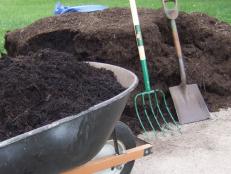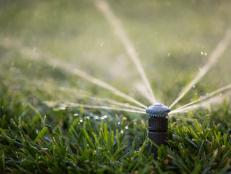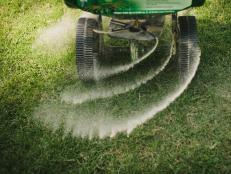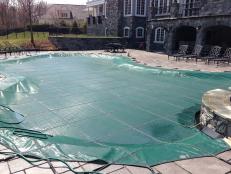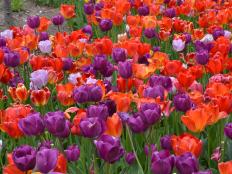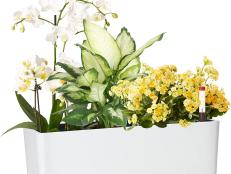Winterizing Plants
Discover easy techniques for getting plants ready for winter’s chill.

Debbie Wolfe
Prepare your garden for cold weather to come by winterizing plants. Many of your prized garden stars survive winter without extra care on your part, but taking time to winterize paves the way for a healthy, productive garden next spring. For tender plants and new additions to the garden, winterizing is vital for cold weather survival.
Start the winterizing process by mulching around landscape plants. Mulch helps insulate soil and prevent frost heave, a condition that occurs when soil repeatedly freezes and thaws—and pushes plants out of soil. When frost heave occurs, plant crowns and roots are exposed to freezing air and drying winds.
When you add fall mulch, aim for a layer that’s 3 to 5 inches deep (deeper in colder regions). Use a material that won’t compact, like straw, chopped leaves or cornstalks, pine straw or clean hay. It’s especially important to mulch shallow-rooted perennials that are prone to frost heave, like blanket flower (Gaillardia), coral bells (Heuchera), pincushion flower (Scabiosa) and shasta daisy (Leucanthemum). Do not mulch bearded iris.
While you’re adding mulch, take time to cut down perennials and pull annuals. This aspect of winterizing plants helps eliminate hiding places for pests and diseases. Leave any plants that add winter interest with seedheads or stems, but clean up as much as possible.
Winterizing plants like roses or newly-planted perennials requires protecting plant crowns with a deeper layer of mulch or soil after the ground freezes. You may want to create a framework around plants using chicken wire, hardware cloth or tomato cages that you stuff with leaves or straw to protect plant crowns. Always wait for soil to freeze before doing this, or you risk creating a hibernation haven for rodents.
In cold weather, evergreen roots freeze in soil and stop taking up water. Winterizing evergreen trees and shrubs involves protecting them from drying winter winds. To do this, erect a burlap screen on the windy sides of plants (usually the west and north). Drive stakes into soil before it freezes, and come back when temperatures are steadily in the 20s to staple or zip-tie burlap to stakes.
Winter Gardening Don'ts
See All PhotosWrap young trees, especially ones with thin bark like fruit trees, soft maple and honey locust, to prevent sunscald. Use a commercial crepe paper-type tree wrap and apply it from the soil line to the second or third branch. Overlap edges as you wrap so it sheds water. Anchor the wrap with a small tack or weatherproof tape.
For tender shrubs and perennials, protecting roots can help plants survive. Build a small screen around plants, heap soil over roots and stuff the screened-in area with leaves or straw. For some tender perennials, cut back top growth and place a layer of packing foam over the plant crown, topped with several inches of soil. Once that freezes, add a mulch layer for extra protection. Use this method to overwinter plants like lantana, pineapple sage or lemon verbena in borderline zones.










